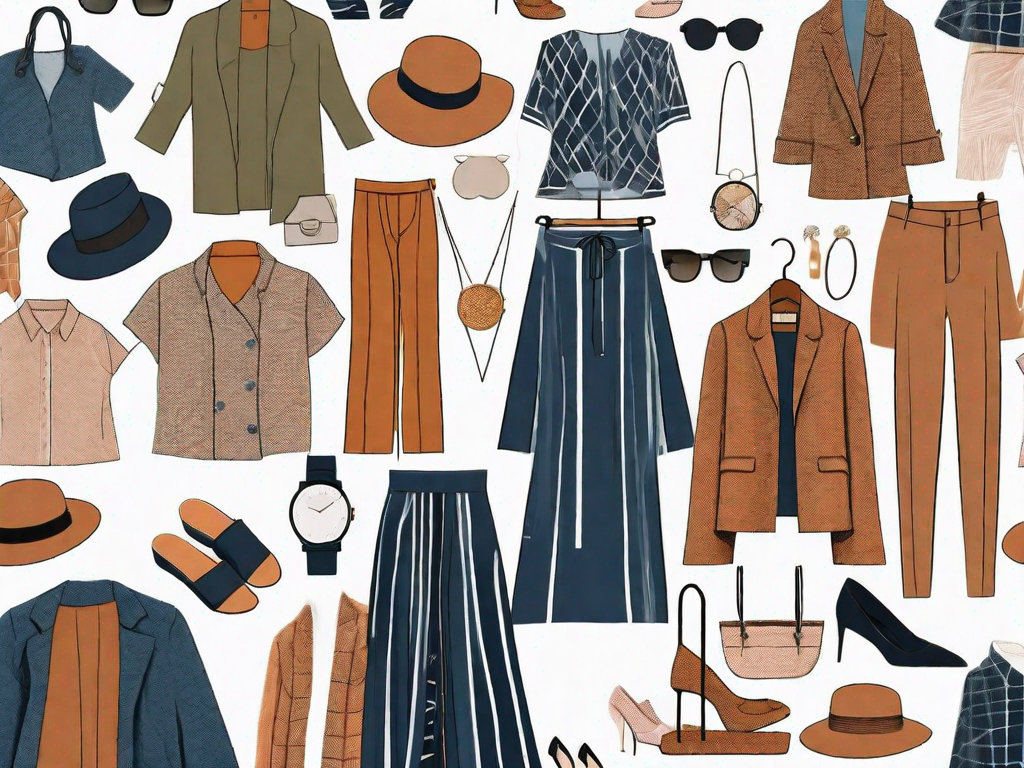Apparel — Fashion Explained

Apparel — Fashion Explained
Apparel has always been an integral part of human culture, serving both functional and aesthetic purposes. Throughout history, clothing has played a significant role in reflecting social identity, cultural norms, and individual preferences. From the ancient civilizations to the modern fashion trends of today, apparel continues to evolve, influenced by various factors such as technology, sustainability, consumer behavior, and the business of fashion.
The History of Apparel
The journey of apparel can be traced back to ancient times when humans first discovered the need for protection from the elements. Initially, clothing served a utilitarian purpose, with garments made from materials readily available in their surroundings.
As societies progressed, clothing evolved to portray social status, cultural traditions, and eventually become a form of self-expression. From the extravagant robes of monarchs to the practical attire of commoners, clothing became a visual representation of one's place in society.
In the modern era, fashion trends emerge rapidly, primarily driven by renowned designers and influential figures in the industry. Fashion shows and media platforms showcase these trends, which then permeate into mainstream culture.
The Evolution of Fashion
The concept of fashion has transformed over time, moving beyond mere functionality to becoming a medium for self-expression and creativity. Today, fashion designers have become influencers and innovators, shaping the industry through their unique visions and artistic expressions.
Fashion designers are the driving force behind trends, with their runway shows and collections setting the tone for each season. They continuously push boundaries, experimenting with materials, silhouettes, and styles to create captivating and groundbreaking designs.
Moreover, fashion is no longer limited to clothing alone but has expanded to encompass accessories, footwear, and even technology-driven wearables. With the advent of smart textiles and 3D printing, fashion has entered a new era of innovation and functionality.
From Functional Clothing to Fashion Statements
In the early stages, clothing primarily served functional purposes, providing protection from the elements and meeting basic human needs. Over time, as civilization advanced, clothing began to reflect cultural changes, personal preferences, and societal shifts.
Today, fashion statements go beyond individual style choices. They can be a form of activism, conveying messages about sustainability, ethical production, and social justice. Increasingly, fashion designers and brands are prioritizing eco-friendly practices, fair trade, and transparency throughout their supply chains.
Ethical and sustainable fashion movements have gained momentum, with consumers demanding greater accountability from the industry. This shift towards conscious consumption is transforming the way apparel is produced, marketed, and consumed.
The Impact of Technology on Apparel
Technological advancements have made a profound impact on the apparel industry, revolutionizing design processes, manufacturing techniques, and even consumer experiences. From fabric innovations to digital platforms, technology continues to shape the way we create, consume, and engage with fashion.
CAD (Computer-Aided Design) software has streamlined the design process, allowing designers to create intricate patterns and prototypes digitally. This reduces the time and resources required for traditional hand-drawn sketches, enabling faster product development and innovation.
Furthermore, e-commerce platforms and digital marketing have transformed the way fashion is bought and sold. Online retailers offer a wide range of choices, personalized recommendations, and easy access to global fashion trends.
How Technological Advancements Have Transformed Fashion
The integration of technology into textiles has also ushered in a new era of smart clothing and wearable technology. Fabrics with built-in sensors can monitor vital signs, track fitness activities, and even adapt to changing environmental conditions.
3D printing has opened up possibilities for bespoke fashion, allowing designers to create complex and personalized garments with greater precision. This technology reduces waste by only utilizing the necessary materials and optimizing the production process.
Artificial intelligence and machine learning algorithms are also being utilized to analyze consumer behavior, predict trends, and optimize supply chain management. These technologies enable fashion brands to create more targeted marketing campaigns and enhance overall efficiency.
Sustainable Fashion and Ethical Apparel
As environmental concerns mount and social responsibility takes center stage, sustainable fashion has emerged as a crucial movement within the apparel industry. Sustainable fashion focuses on reducing the environmental impact of clothing production, promoting ethical practices, and ensuring transparency throughout the supply chain.
Brands are increasingly adopting eco-friendly materials, such as organic cotton, recycled fibers, and natural dyes. These choices contribute to reducing water consumption, eliminating harmful chemicals, and minimizing waste in the production process.
Furthermore, ethical apparel entails fair treatment of workers, ensuring safe working conditions and fair wages. Brands are recognizing the importance of responsible manufacturing practices and partnering with organizations that prioritize social responsibility.
The Rise of Eco-Friendly and Socially Responsible Clothing
Consumers are becoming more conscious of the impact of their purchasing decisions, and there is a growing demand for sustainable and ethically produced clothing. This shift in consumer behavior has prompted fashion brands to reassess their practices and offer environmentally friendly alternatives.
The rise of circular fashion, which focuses on reducing waste through recycling and upcycling, has gained momentum. It encourages consumers to embrace a more mindful approach to fashion, extending the lifespan of garments and reducing the carbon footprint.
Collaborations between sustainable designers, non-profit organizations, and traditional fashion brands have further propelled the movement for eco-friendly and socially responsible clothing. These partnerships create a platform for innovation, education, and awareness, driving positive change within the fashion industry.
Fashion Supply Chain
The global nature of the fashion industry has resulted in highly complex and interconnected supply chains. Raw materials may be sourced from one country, while manufacturing takes place in another, before the finished products are transported to retail hubs across the world.
Fast fashion, characterized by its rapid response to trends and low-cost production, has dominated the industry for years. However, the environmental and social impact of this model has sparked a growing movement towards slow fashion and conscious consumption.
Brands are now exploring more sustainable and localized production methods, reducing transportation emissions and supporting local economies. Additionally, the rise of online shopping has revolutionized retail, offering convenience and accessibility to consumers worldwide.

